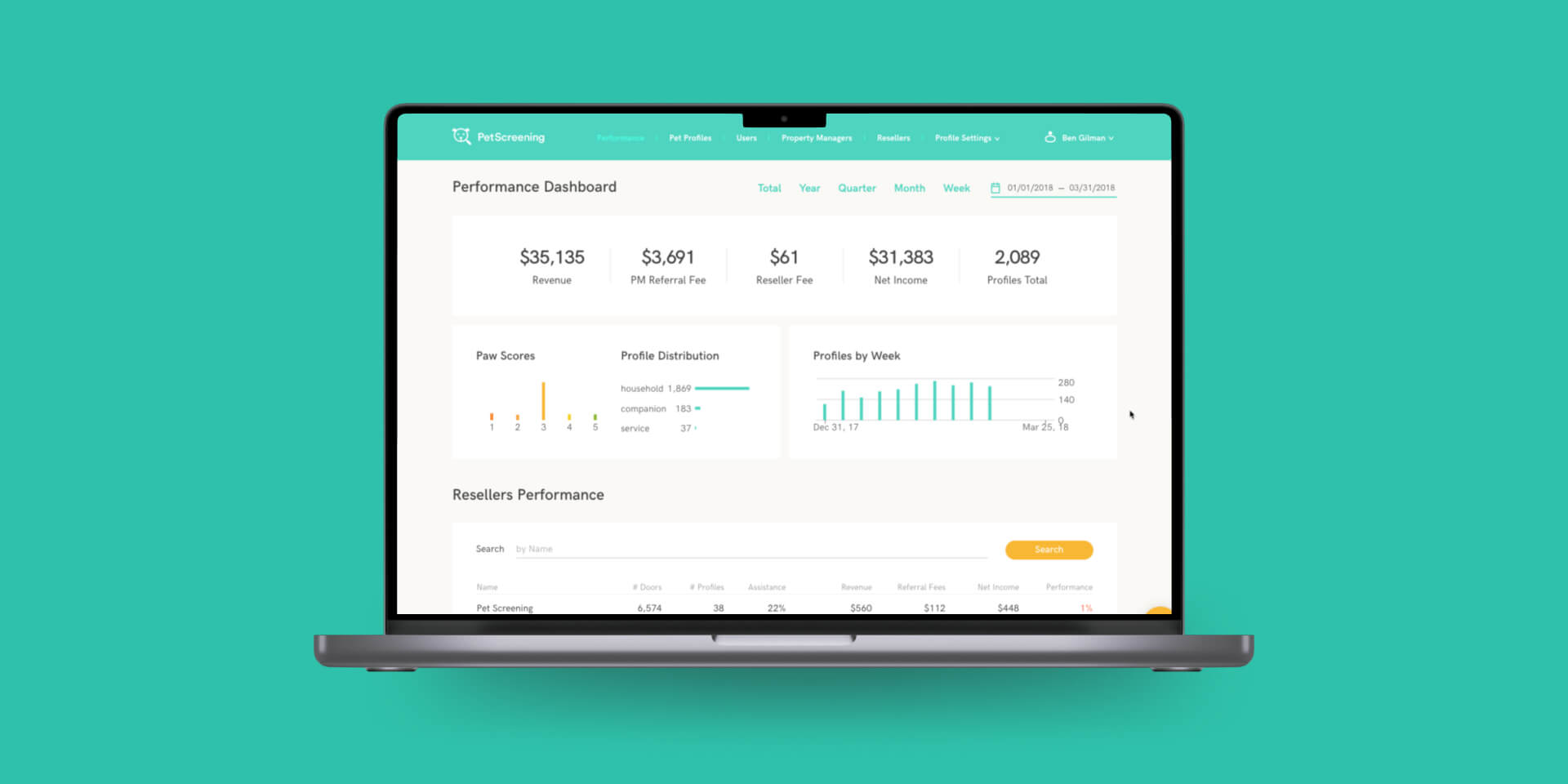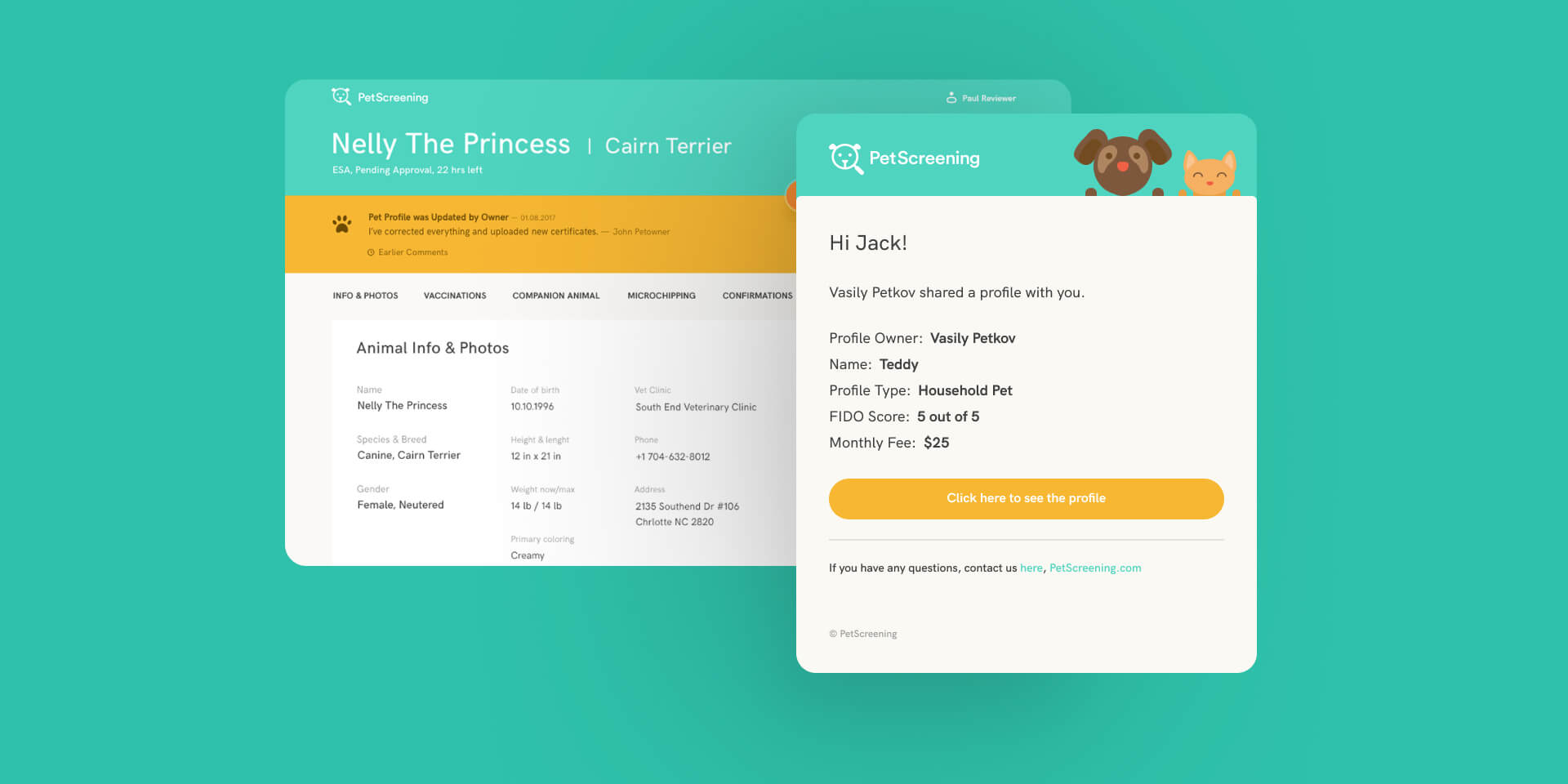If you’ve ever rented an apartment with a pet, you know the process goes something like this: You fill out a form detailing what type of pet you have, the breed, the size, the status of its vaccines. Perhaps you agree to a pet deposit, and that’s it.
If you’ve ever owned a rental property, you know that process is innately flawed: You have no guarantees the information your prospective tenants are filling out is accurate (a “lab mix” on paper becomes a Rottweiler in real life). You have no insight into whether they are responsible animal owners (a much better predictor of safety than breed). And when you find out a prospective tenant has misrepresented on a pet application, it’s too late to do anything about it.
John Bradford — a long time real estate investor, entrepreneur and member of the North Carolina legislature — had experienced that pain point firsthand. In it, he saw an opportunity. So he created Pet Screening, an (aptly named) business that uses technology to streamline the pet screening process and make it better for tenants and property owners alike.
He had the concept; the next step was finding
a technology partner to help bring that business to life.
The opportunity
At Dualboot Partners, we bring product and technology expertise to a business. So when we’re evaluating a potential project, we look for clients with complementary assets: Access to the market they’re trying to break into, industry expertise and capital.
When John came to us, he had all three: He’d been in the market for a decade. He knew the industry inside and out. And he had an existing business that was profitable enough to fund a new venture.
He’d also gone through the process of developing a software product before. He knew what he needed — and what he didn’t.

With Pet Screening, I knew I needed a development team, and I knew I needed someone to run point between that team and me. Dualboot Partners was a natural fit. Not only did they understand the technology; they understood the business problem we were trying to solve. Plus, when you get a fractional CTO, you can put more of your money into the development, which is really what gets your product ahead.

John Bradford
PetScreening
The development
When we began work with Pet Screening, we sat down with John and mapped out the idea. We advised on the business model, and we strategized the go-to-market plan.
With that in place, we started to break down what an application would look like and what it should do. We sketched out wireframes and mock-ups, sent them off to John for feedback and approval, and then got to work on the build.
From design to launch, the process took less than five months. When it was ready for testing, we started small — unleashing the application at John’s property management firm, which ran the first iteration of Pet Screening for two months in beta mode. Then, in July of 2017, we opened the application up to a closed beta — a group of about 10 firms that used the product for three months. We continued to iterate and iron out the kinks, while Pet Screening started generating revenue.
Then, in October of 2017, we launched Pet Screening to the public. Since we were able to get the MVP to market quickly, we had plenty of budget available to iterate based on user feedback. As the platform has gained traction we have been able to scale the software team in-stride — the results have been tremendous.

The challenge
Pet Screening solves a problem in the marketplace, and the technology works. But that has presented another challenge in the development process: Demand for Pet Screening took off so fast that the onboarding process struggled to keep pace.
As the problem arose, we hashed out our options: We could hire an employee or two to manage the onboarding process. Or, we could build integrations with APIs so that the onboarding was automatic.
“Just throwing a person at it doesn’t mean you’ll get someone onboard because a lot of our clients are entrepreneurs growing their own firms and doing everything. So to ask them to slow down and put another thing on their plates just isn’t going to work. You have to make it automatic, and instantaneous,” John said.
In the end, that’s what we’ve done: We’re building Pet Screening so that the onboarding process is as simple as clicking a button. It’s a technology solution to a business problem, and in the end, it stands to reduce our cost of sale and keep our team lean.
I can tell you without any hesitation that we have never been down, which is huge. Because of that, I can also say I haven’t really put any time into worrying about if it’s going to work today. I’ve put my time into thinking through how we can develop things that are going to help generate revenue.

John Bradford
PetScreening
The impact
At Dualboot Partners, our goal in every client relationship is to tackle the technology so the founders can handle the business. That commitment was equally important to John.
That has been time well spent. Pet Screening is now growing 21 percent month over month. The business has added a full-time operations manager to the team, and its customers are coming to them. Recently, the largest multifamily management company in the country reached out to Pet Screening to discuss how the software could benefit its business. And almost one year to the day after Pet Screening launched to the public at an annual industry conference, that same conference named Pet Screening its Vendor of the Year.
It’s all proof that the concept is resonating, the revenue is real, and the market is huge. And Dualboot Partners was honored to play a role in taking the concept to full-on execution.
“We’re first to market. We’re unique to the market, but we’re running hard and running fast to continue establishing ourselves as the front-runner,” John said. “When I started Pet Screening, I felt like, if I didn’t do it now, I was never going to do it. And now I’m so thankful we have because it’s been a fun ride. And we’re just getting started.”